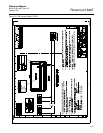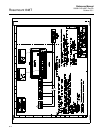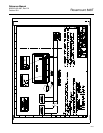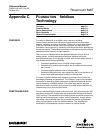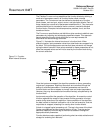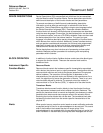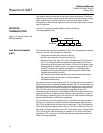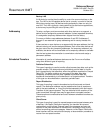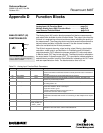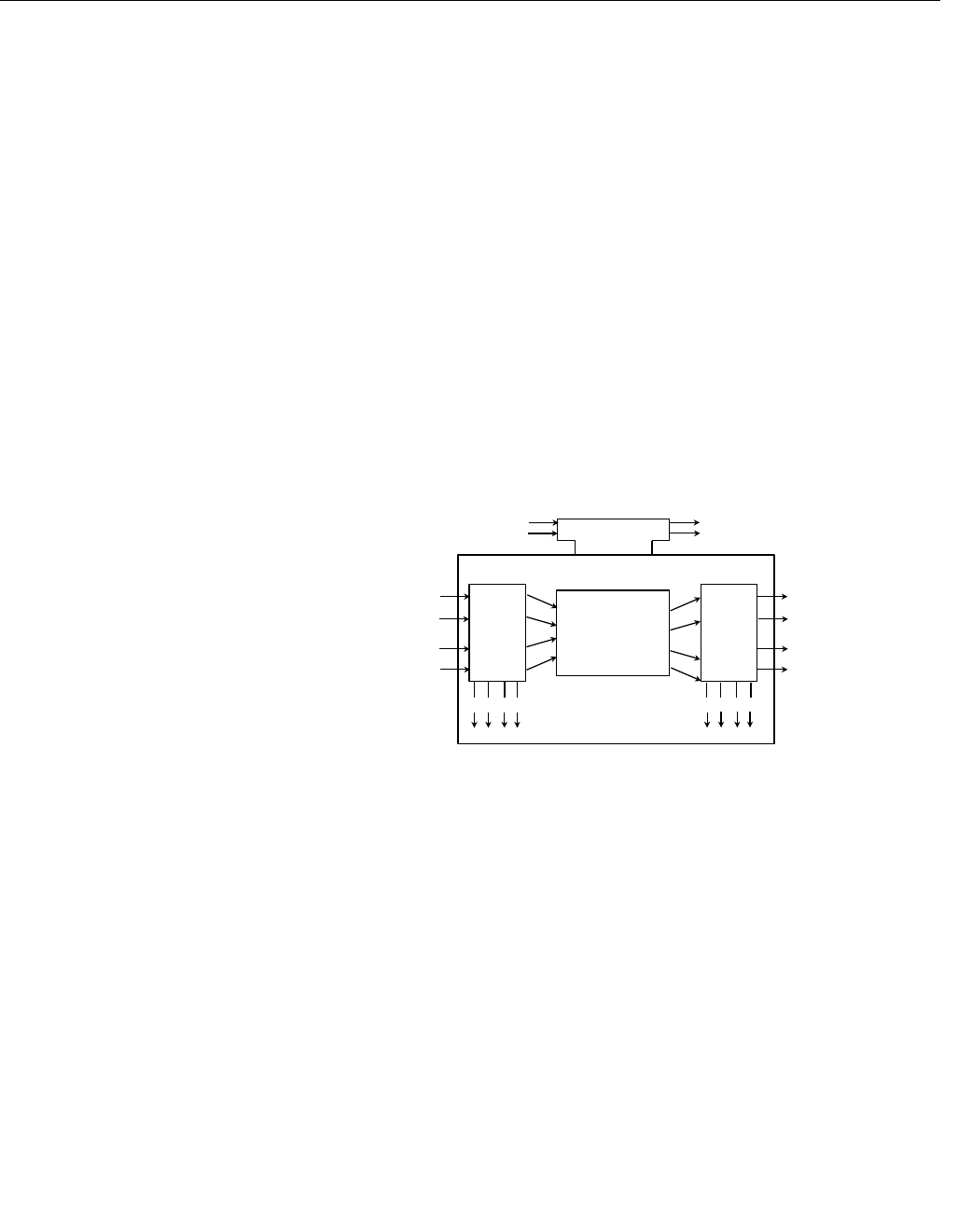
Reference Manual
00809-0100-4697, Rev EA
October 2011
Rosemount 848T
C-2
The Fieldbus FOUNDATION has established the function blocks by defining a
small set of parameters used in all function blocks called universal
parameters. The F
OUNDATION has also defined a standard set of function
block classes, such as input, output, control, and calculation blocks. Each of
these classes has a small set of parameters established for it. They have also
published definitions for transducer blocks commonly used with standard
function blocks. Examples include temperature, pressure, level, and flow
transducer blocks.
The F
OUNDATION specifications and definitions allow vendors to add their own
parameters by importing and subclassing specified classes. This approach
permits extending function block definitions as new requirements are
discovered and as technology advances.
Figure C-1 illustrates the internal structure of a function block. When
execution begins, input parameter values from other blocks are snapped-in by
the block. The input snap process ensures that these values do not change
during the block execution. New values received for these parameters do not
affect the snapped values and will not be used by the function block during
the current execution.
Figure C-1. Function
Block Internal Structure
Once the inputs are snapped, the algorithm operates on them, generating
outputs as it progresses. Algorithm executions are controlled through the
setting of contained parameters. Contained parameters are internal to
function blocks and do not appear as normal input and output parameters.
However, they may be accessed and modified remotely, as specified by the
function block.
Input events may affect the operation of the algorithm. An execution control
function regulates the receipt of input events and the generation of output
events during execution of the algorithm. Upon completion of the algorithm,
the data internal to the block is saved for use in the next execution, and the
output data is snapped, releasing it for use by other function blocks.
A block is a tagged logical processing unit. The tag is the name of the block.
System management services locate a block by its tag. Thus the service
personnel need only know the tag of the block to access or change the
appropriate block parameters.
Function blocks are also capable of performing short-term data collection and
storage for reviewing their behavior.
Input Events Output Events
Input
Parameter
Linkages
Output
Parameter
Linkages
Processing
Algorithm
Execution
Control
Input
Snap
Status
Output
Snap
Status




